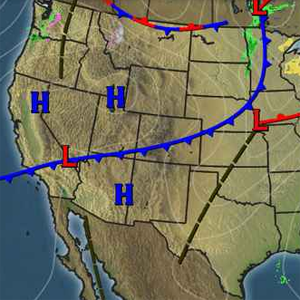 NEWS
NEWS
 NEWS
NEWS
 NEWS
NEWS
![]() We’re always asking: what is the weather like? Will it better or worse? Amidst the science of understanding the weather there’s a myriad of sensors and tools and one of the most effective is the barometer. It is part of the measuring instruments that have contributed to the birth of meteorology, as well as the thermometer and anemometer.
We’re always asking: what is the weather like? Will it better or worse? Amidst the science of understanding the weather there’s a myriad of sensors and tools and one of the most effective is the barometer. It is part of the measuring instruments that have contributed to the birth of meteorology, as well as the thermometer and anemometer.
As technology advances, built-in sensor circuits called digital barometers are being introduced in most high profile smartphones. A barometer allows the mobile device to measure atmospheric pressure; the atmospheric pressure at a given location undergoes variations associated with weather changes and moreover, in a particular place atmospheric pressure decreases with altitude.
Thus, the barometer can also serve as an additional sensor, although somewhat imprecise. Google and Samsung’s Galaxy Nexus and Android devices with Ice Cream Sandwich 4.0 or later feature a barometer to make more accurate weather predictions.
What if the barometer is used not only to make personalized weather predictions, but to provide data to a crowdsourced weather network everywhere? Imagine also what if a lot of smartphones around a regional area are sending barometric climate information (near real time) to a server to give you very specific, very precise weather forecasts?
PressureNET from Cumulonimbus, a Canadian software company run by Jacob Sheehy and Phil Jones, is one of the applications for Android tablets and phones that collects and maps users’ barometer readings. This data is then displayed as markers on an embedded Google map, and users can view the data graphed over time.
How it Works
PressureNET supports all Android devices running 3.0 and up but, only tablets or phones with barometers will be able to contribute readings, see their pressure and use the widget.
All latest devices with barometers including Galaxy Nexus, Galaxy S3, Galaxy Note, Galaxy Note II, Nexus 4, Nexus 10, and Xoom currently support PressureNET.
The open source PressureNET app displays a live map of user-submitted atmospheric pressure readings. Users will able to build useful maps and graphics of atmospheric pressure changes over time once many users have installed PressureNET. The company is working towards building a comprehensive, live network of barometer readings in order to improve weather prediction.
The result is that we would get weather reports more accurate and instant, in which millions of users with smartphones report traffic conditions and fed a database that anyone can check to see what the status of city weather.
The company says currently about 1,800 to 2,000 users submitting their barometer readings per day from across the world and once they have more users and more data, they promise to use the data to incorporate nowcasting techniques, include radar imagery and improve real time weather prediction.
So, What Can I Do With PressureNET?
The app features (in version 2.0) include:
The company just released pressureNET 2.1 with new added features such as new light UI, improved graph loading and new auto submit options that allow users to submit data in one or five minute interval.
Right now, you can try out PressureNET for free, with options to download the source code of the app. This project is fully open source (MIT license) and you can find the code on GitHub here, here and here.
Support our open free content by sharing and engaging with our content and community.
Where Technology Leaders Connect, Share Intelligence & Create Opportunities
SiliconANGLE Media is a recognized leader in digital media innovation serving innovative audiences and brands, bringing together cutting-edge technology, influential content, strategic insights and real-time audience engagement. As the parent company of SiliconANGLE, theCUBE Network, theCUBE Research, CUBE365, theCUBE AI and theCUBE SuperStudios — such as those established in Silicon Valley and the New York Stock Exchange (NYSE) — SiliconANGLE Media operates at the intersection of media, technology, and AI. .
Founded by tech visionaries John Furrier and Dave Vellante, SiliconANGLE Media has built a powerful ecosystem of industry-leading digital media brands, with a reach of 15+ million elite tech professionals. The company’s new, proprietary theCUBE AI Video cloud is breaking ground in audience interaction, leveraging theCUBEai.com neural network to help technology companies make data-driven decisions and stay at the forefront of industry conversations.